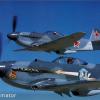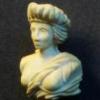-
Posts
936 -
Joined
-
Last visited
Reputation Activity
-
 shipmodel reacted to CharlieZardoz in Sultana by CharlieZardoz - Model Shipways - 1:64
shipmodel reacted to CharlieZardoz in Sultana by CharlieZardoz - Model Shipways - 1:64
The process wasn't nearly as hard as it sounds but this is the finished result. The top of the hull all nice and even so now I can flip her over and nail her to the board. Note the deck templates laid out, the middle one seems a bit small but that's because the sides of the quarter and forecastle deck's will be planked 1/8" by 1/16" inch planks.
-
 shipmodel reacted to CharlieZardoz in Sultana by CharlieZardoz - Model Shipways - 1:64
shipmodel reacted to CharlieZardoz in Sultana by CharlieZardoz - Model Shipways - 1:64
Using a ruler and one of those thingies which name currently eludes me, I kept sanding away the edges with my sanding sticks until the angle was just right, redrawing the lines each time to use as a guide. See how much nicer the camber is now.
-
 shipmodel got a reaction from Salty Sea Dog in Licorne 1755 by mtaylor - 3/16" scale - French Frigate - from Hahn plans - Version 2.0 - TERMINATED
shipmodel got a reaction from Salty Sea Dog in Licorne 1755 by mtaylor - 3/16" scale - French Frigate - from Hahn plans - Version 2.0 - TERMINATED
Hi Mark -
Welcome to the wacky and wonderful world of spiling. Although you can get lots of help from various books, and Jim Roberts' is one of the best, it is mostly a question of experience and eyeballing.
One thing that Jim suggested when I was his pupil was to take strips of frosted tape and lay them flat on the hull till the area I was working on was completely covered. Like the planks, the tape will sweep up toward the wale with the curve of the hull and cover previous tape runs. This is a good thing. It shows how much the planks want to bend so I could start to judge how many stealers/drop planks I might need. Also, with the area completely taped I could line out the plank runs in pencil, making as many mistakes as I wanted without consequence. After a while I developed a good sense of how the hull wanted to be planked, and could then much more accurately position my battens to guide the actual wood planks.
On the Licorne I have a feeling, and I could be wrong, that your first batten is too high (towards the keel) at the bow. Judging by eye, the remaining area from the batten to the keel is not wide enough and your lower planks could be crowded and narrow, The only way to be sure of this is to put in all of the battens that you want and then carefully examine them from dead ahead to see if they give you equal spacing. A similar thing goes on at the stern.
Here is a drawing of what I mean. It is from Jim's book, although I have removed his text for clarity.
Remember also that the garboard and first broad strake (the one next to the garboard) are wider than the rest of the planks, and your spiling/batten plan has to take this into account.
This was probably a longer response than you wanted, but I hope that it helps.
Dan
-
 shipmodel reacted to druxey in Licorne 1755 by mtaylor - 3/16" scale - French Frigate - from Hahn plans - Version 2.0 - TERMINATED
shipmodel reacted to druxey in Licorne 1755 by mtaylor - 3/16" scale - French Frigate - from Hahn plans - Version 2.0 - TERMINATED
Mark: sorry that I'm late in on this conversation. Read the three tutorials on lining out and spiling on this site before you go too far. Under 'Building, framing, planking and plating...."
-
 shipmodel reacted to wyz in Licorne 1755 by mtaylor - 3/16" scale - French Frigate - from Hahn plans - Version 2.0 - TERMINATED
shipmodel reacted to wyz in Licorne 1755 by mtaylor - 3/16" scale - French Frigate - from Hahn plans - Version 2.0 - TERMINATED
Mark I know first hand how much you can agonize when doing the spiling. It's important to do it right if the run of the planking is to have that proper look. Believe me when I say I feel your pain. As I read the posts on your build log I'm struck with how sage like Dan (shipmodel) is when he says that the measurement between strakes and battens, while important, are just a starting point. Battens are continually adjustable guides and not rigid inflexable borders. Furthermore he said trust your eyes in conjunction with the battens. He gives GOOD advise. Doing this work, to some extent, is feel. I always found I had to play around with the tape a good deal to get through this process and have it look right. Stay with it friend, you'll find the answer.
Tom
-
 shipmodel got a reaction from Salty Sea Dog in Licorne 1755 by mtaylor - 3/16" scale - French Frigate - from Hahn plans - Version 2.0 - TERMINATED
shipmodel got a reaction from Salty Sea Dog in Licorne 1755 by mtaylor - 3/16" scale - French Frigate - from Hahn plans - Version 2.0 - TERMINATED
Carl, George -
You are both right. Spiling/planking is a complicated process. Even after doing it for 30 years I still have to take my time and agonize over the process. Sometimes planks that I thought were correct have to be stripped out and replaced.
The problem is the shape of the hull with its compound curves, some of which change from convex to concave on the same rib and along the same planking strake. Yes, you can start with planks that are slightly wider than your measured marks, which works on the convex curves, but is wrong for the concave curves.
My only point here is that you can't rely on measurements, no matter how precise. To get a smooth, straight, fair run for each strake the measurements are just the starting point. Each plank has to be shaped by eye and the battens used as adjustable guides, not inflexible borders.
Fortunately, I had some good teachers, and now there is this entire wonderful community of modelers in the NRG and on MSW who are so generous with their time and knowledge.
Be well
Dan
-
 shipmodel got a reaction from DORIS in ROYAL CAROLINE 1749 by Doris - 1:40 - CARD
shipmodel got a reaction from DORIS in ROYAL CAROLINE 1749 by Doris - 1:40 - CARD
Congratulations on completion, Doris. I have followed your build with great interest and admiration. The finished model is a miniature gem, and the interior spaces are spectacular.
Best wishes for your new job and your next project.
Be well
Dan
-
 shipmodel reacted to DORIS in ROYAL CAROLINE 1749 by Doris - 1:40 - CARD
shipmodel reacted to DORIS in ROYAL CAROLINE 1749 by Doris - 1:40 - CARD
Royal Caroline is finished. Here you can see many pics of the model:
-
 shipmodel reacted to DORIS in ROYAL CAROLINE 1749 by Doris - 1:40 - CARD
shipmodel reacted to DORIS in ROYAL CAROLINE 1749 by Doris - 1:40 - CARD
And almost last steps at my work on Royal Caroline...
A sailor (woman) with binoculars
Anchor buoys
Rudder´s chain
-
 shipmodel reacted to DORIS in ROYAL CAROLINE 1749 by Doris - 1:40 - CARD
shipmodel reacted to DORIS in ROYAL CAROLINE 1749 by Doris - 1:40 - CARD
Hello, dear friends!
Thank you very much for your support and kind words. I appreciate them a lot.
I was not here for a long time and I have to apologize. In January I started new career, the work was not difficult, but I had no free time and also the new job did not bring me any pleasure nor satisfaction.
So I decided to finish there and few days ago I have found a new occupation as a branch Manager at Don Bosco society and believe this will be much better for me.
The Royal Caroline is already finished a have to say, that she is my best ship model I have ever created.
I would like to bring some pics from the progress for you and hope, you will enjoy them.
Have a great time and take care
Doris
-
 shipmodel reacted to gjdale in Bomb Vessel Granado 1742 by gjdale - FINISHED - 1/48 - Cross-Section
shipmodel reacted to gjdale in Bomb Vessel Granado 1742 by gjdale - FINISHED - 1/48 - Cross-Section
It seems to have been a long time since my last post, so just to show proof of life here is a quick update.
Upper Deck Framing
These last few weeks have been a very busy time since returning to work, and so visits to the shipyard have been few and far between. As the opportunity has arisen, I have kept plugging away at making the various knees, Carlings and Ledges. Preparation of the Carlings was very similar to that for the Deck Beams, with notches cut on the mill and finished by hand with a chisel. Knees and Beam Arms were all cut on the scroll saw and finished on the Spindle and Disc Sanders.
Unfortunately, despite the care that I took in aligning the Deck Beams, Beam No.2 is slightly out, meaning that the Carlings between Beams 1 and 2, and between Beams 2 and 3, are also slightly out of alignment.
Here is an overall shot to show progress to date – of course the angle was carefully selected to hide as many imperfections as possible! This shot was taken immediately after sanding, so some clean-up is still required. The side that will not be planked will also receive a coat or two of Wipe-on Poly in due course.
-
 shipmodel got a reaction from lb0190 in Licorne 1755 by mtaylor - 3/16" scale - French Frigate - from Hahn plans - Version 2.0 - TERMINATED
shipmodel got a reaction from lb0190 in Licorne 1755 by mtaylor - 3/16" scale - French Frigate - from Hahn plans - Version 2.0 - TERMINATED
Hi Mark -
Welcome to the wacky and wonderful world of spiling. Although you can get lots of help from various books, and Jim Roberts' is one of the best, it is mostly a question of experience and eyeballing.
One thing that Jim suggested when I was his pupil was to take strips of frosted tape and lay them flat on the hull till the area I was working on was completely covered. Like the planks, the tape will sweep up toward the wale with the curve of the hull and cover previous tape runs. This is a good thing. It shows how much the planks want to bend so I could start to judge how many stealers/drop planks I might need. Also, with the area completely taped I could line out the plank runs in pencil, making as many mistakes as I wanted without consequence. After a while I developed a good sense of how the hull wanted to be planked, and could then much more accurately position my battens to guide the actual wood planks.
On the Licorne I have a feeling, and I could be wrong, that your first batten is too high (towards the keel) at the bow. Judging by eye, the remaining area from the batten to the keel is not wide enough and your lower planks could be crowded and narrow, The only way to be sure of this is to put in all of the battens that you want and then carefully examine them from dead ahead to see if they give you equal spacing. A similar thing goes on at the stern.
Here is a drawing of what I mean. It is from Jim's book, although I have removed his text for clarity.
Remember also that the garboard and first broad strake (the one next to the garboard) are wider than the rest of the planks, and your spiling/batten plan has to take this into account.
This was probably a longer response than you wanted, but I hope that it helps.
Dan
-
 shipmodel got a reaction from popash42 in Queen Anne's Revenge 1710 by shipmodel - FINISHED - 1/36 scale
shipmodel got a reaction from popash42 in Queen Anne's Revenge 1710 by shipmodel - FINISHED - 1/36 scale
Thank you all for the likes and compliments, especially from those who followed the entire oddessy from the beginning. I am glad if any of the explanations of my own methods and techniques made another modeler's efforts a little easier.
Here is a final photo of the model being crated for shipping.
I hope to get down to the museum for the installation. If so, I'll post a photo or two.
Be well
Dan
-
 shipmodel got a reaction from scrubbyj427 in Queen Anne's Revenge 1710 by shipmodel - FINISHED - 1/36 scale
shipmodel got a reaction from scrubbyj427 in Queen Anne's Revenge 1710 by shipmodel - FINISHED - 1/36 scale
Hello again to all.
Thanks for the likes and comments. I am glad that I can pass along some of the tips, tricks and techniques from my own teachers and from decades of trials and lots of errors along the way.
This will be the final installment of this build log. The model is done and is waiting to be picked up for crating and delivery. The final touches include: the stern lantern; mounting the anchors and anchor buoys; fitting the ship's boat and the spare spars.
The lantern was done in the round French fashion, rather than the hexagonal English style. This meant that I had to scratch build it, rather than buying one of the well-designed and detailed ones from Syren Models. In any event, here is how I went about it:
The lantern is not really round so it cannot be simply turned to shape, as you can see from the reproduced sections of the plan it is skewed towards the stern. The central body was the most difficult to create. Attempts to carve wood and acrylic were both completely unsatisfactory. Starting from a cylindrical shape I could not get the proper angle to the lamp body. Instead, I tried Sculpey, a clay that is hardened by baking in an oven. After shaping it to the basic form by hand it was hardened according to the package directions. When cool and hard it was still easily refined and smoothed by sanding. The brass rod is for convenience in holding and shaping.
1
Here is a close-up of the body. Examining the photograph I saw that I still needed to bring down the sharp ridge between the upper and lower portions.
2
When the body was brought to shape it was given several coats of primer, then a final light grey color coat, with light sanding in between. The cap was carved from pear wood in a floral design. I tried to get 16 petals around the circumference, but this proved too fiddly, so I have 12. The finial on the top is turned from pear. The mullions to hold the glass are cherry veneer cut to 0.030” x 0.015” strips. Each was wet bent at the top end then glued in between the petals. When that was dry and hard the rest of the strip was glued down the body of the lantern. I put in the first four to quarter the body then marked out thirds in each section for the rest.
3
Here is a composite photo with two views of the lantern with all the vertical mullions installed.
4
The cross pieces were cut from the veneer strip and individually installed in three bands around the lantern.
5
A floral base was carved and a round drop at the bottom were made out of pear. The finished lantern was sanded to remove any sharp corners then finished with a light stain/neutral carrier mix. I let the stain pool a bit in the corners, which gave the panes some depth and shadow. Each section was filled with white glue which dried to create a glossy ‘glass’ pane.
6
Mounting hardware was fashioned from a 0.062” brass rod with two pieces soldered at right angles. The mount was bent and trimmed to fit a trio of holes in the stern. After blackening the mount was installed and the lantern fitted to it at an appropriate height.
7
And here is how the lantern fits in with the look of the rest of the stern.
8
Next I turned to the anchors. In an earlier segment I went through how I constructed them. Here are the two finished sets of four anchors for each model.
9
To hang them I needed a triple block for each of the largest ones which would be mounted at the catheads, as well as an anchor buoy for each. The blocks were made from 7mm triple blocks which were detailed by drilling a second set of line holes and rounding the resulting ‘sheave’ in the middle. The hook was bent up from 0.035” annealed iron wire with the shank wrapped around the block in a deepened strop groove.
The buoy bodies were ¾” long, turned from maple. Two ropes were seized together forming a small loop and spot glued at either end. The lines were led down the body and under a cinch line about ¼ of the way from either end. The vertical lines were doubled back on themselves, glued and trimmed.
10
Here are the anchors mounted on the starboard side. They are the two middle sized ones. They are hung with strong lines from timberheads at the rail as well as the hooked block at the cathead. A sense of weight is imparted by hanging a weight from the anchor then stiffening the supporting lines with dilute white glue.
11
Here is the buoy tied to the shrouds with a loop of line that is ultimately secured to the anchor shank.
12
And here are the two on the port side similarly secured. These are the largest and smallest of the set.
13
The final tasks were to secure the ship’s boat in the waist and add two spare topmasts and large spars. These sit between the gaps in the rails at the edges of the foredeck and quarterdeck.
14
Various rope coils were added to each belaying point, the model was cleaned and a few spots of paint were touched up.
So here she is, ready for pickup and shipping.
15
16
And one final photo of a future crewman, grandson Eli, who is almost four and already very interested in what his Poppy Dan does with his boats. . .
17
It was an interesting build, and radically increased my appreciation and respect for those modelers who rig sails. As always, questions, comments, and critiques are very welcome.
Back soon with another project, the SS Andrea Doria in 1:200 scale.
Till then, be well,
Dan
-
 shipmodel got a reaction from Mfelinger in Licorne 1755 by mtaylor - 3/16" scale - French Frigate - from Hahn plans - Version 2.0 - TERMINATED
shipmodel got a reaction from Mfelinger in Licorne 1755 by mtaylor - 3/16" scale - French Frigate - from Hahn plans - Version 2.0 - TERMINATED
Hi Mark -
Welcome to the wacky and wonderful world of spiling. Although you can get lots of help from various books, and Jim Roberts' is one of the best, it is mostly a question of experience and eyeballing.
One thing that Jim suggested when I was his pupil was to take strips of frosted tape and lay them flat on the hull till the area I was working on was completely covered. Like the planks, the tape will sweep up toward the wale with the curve of the hull and cover previous tape runs. This is a good thing. It shows how much the planks want to bend so I could start to judge how many stealers/drop planks I might need. Also, with the area completely taped I could line out the plank runs in pencil, making as many mistakes as I wanted without consequence. After a while I developed a good sense of how the hull wanted to be planked, and could then much more accurately position my battens to guide the actual wood planks.
On the Licorne I have a feeling, and I could be wrong, that your first batten is too high (towards the keel) at the bow. Judging by eye, the remaining area from the batten to the keel is not wide enough and your lower planks could be crowded and narrow, The only way to be sure of this is to put in all of the battens that you want and then carefully examine them from dead ahead to see if they give you equal spacing. A similar thing goes on at the stern.
Here is a drawing of what I mean. It is from Jim's book, although I have removed his text for clarity.
Remember also that the garboard and first broad strake (the one next to the garboard) are wider than the rest of the planks, and your spiling/batten plan has to take this into account.
This was probably a longer response than you wanted, but I hope that it helps.
Dan
-
 shipmodel got a reaction from Salty Sea Dog in Licorne 1755 by mtaylor - 3/16" scale - French Frigate - from Hahn plans - Version 2.0 - TERMINATED
shipmodel got a reaction from Salty Sea Dog in Licorne 1755 by mtaylor - 3/16" scale - French Frigate - from Hahn plans - Version 2.0 - TERMINATED
Hi Jay -
I don't think that you are missing anything, and it is probably my failure to explain properly in any case. We are both doing similar things to get a good result. You are planking in one direction towards a batten, while I plank in both directions towards a center. Like many tasks in ship model building, there are several ways to solve any particular problem. All of them are right, so long as the result is good. I looked at the log of your Connie build and you are clearly getting good results. Stick to what works for you.
Be well
Dan
-
 shipmodel got a reaction from mobbsie in Licorne 1755 by mtaylor - 3/16" scale - French Frigate - from Hahn plans - Version 2.0 - TERMINATED
shipmodel got a reaction from mobbsie in Licorne 1755 by mtaylor - 3/16" scale - French Frigate - from Hahn plans - Version 2.0 - TERMINATED
Carl, George -
You are both right. Spiling/planking is a complicated process. Even after doing it for 30 years I still have to take my time and agonize over the process. Sometimes planks that I thought were correct have to be stripped out and replaced.
The problem is the shape of the hull with its compound curves, some of which change from convex to concave on the same rib and along the same planking strake. Yes, you can start with planks that are slightly wider than your measured marks, which works on the convex curves, but is wrong for the concave curves.
My only point here is that you can't rely on measurements, no matter how precise. To get a smooth, straight, fair run for each strake the measurements are just the starting point. Each plank has to be shaped by eye and the battens used as adjustable guides, not inflexible borders.
Fortunately, I had some good teachers, and now there is this entire wonderful community of modelers in the NRG and on MSW who are so generous with their time and knowledge.
Be well
Dan
-
 shipmodel got a reaction from wyz in Licorne 1755 by mtaylor - 3/16" scale - French Frigate - from Hahn plans - Version 2.0 - TERMINATED
shipmodel got a reaction from wyz in Licorne 1755 by mtaylor - 3/16" scale - French Frigate - from Hahn plans - Version 2.0 - TERMINATED
Carl, George -
You are both right. Spiling/planking is a complicated process. Even after doing it for 30 years I still have to take my time and agonize over the process. Sometimes planks that I thought were correct have to be stripped out and replaced.
The problem is the shape of the hull with its compound curves, some of which change from convex to concave on the same rib and along the same planking strake. Yes, you can start with planks that are slightly wider than your measured marks, which works on the convex curves, but is wrong for the concave curves.
My only point here is that you can't rely on measurements, no matter how precise. To get a smooth, straight, fair run for each strake the measurements are just the starting point. Each plank has to be shaped by eye and the battens used as adjustable guides, not inflexible borders.
Fortunately, I had some good teachers, and now there is this entire wonderful community of modelers in the NRG and on MSW who are so generous with their time and knowledge.
Be well
Dan
-
 shipmodel got a reaction from lb0190 in Licorne 1755 by mtaylor - 3/16" scale - French Frigate - from Hahn plans - Version 2.0 - TERMINATED
shipmodel got a reaction from lb0190 in Licorne 1755 by mtaylor - 3/16" scale - French Frigate - from Hahn plans - Version 2.0 - TERMINATED
Mark -
Looks much better to my eye. Should fit well once you set the rest of your battens.
As for exact plank widths and numbers, don't tie yourself to exact dimensions, they really can't be calculated. There is what I call the 3-dimensional problem. The widths you have measured are for the faces of the ribs. The planks have a definite thickness, so where they cover a convex surface the inside corners hit each other before the outer ones do, creating an unsightly gap. This is even more of a problem with French designs that have those large bulges at the waterline.
To get a tight fit at the outer surface the solution is to bevel the edges of the planks, but then the inside width of the plank is less than the outer width, and no longer matches the measured dimensions. You can start with wider planks, but the variation changes depending on the curvature that is being covered. This changes from wale to keel and even along the length of one plank strake.
My solution, which is just one of several that works, is to plank up from the keel and down from the wale at the same time. As you near the center all of the dimensions are recalculated after each plank strake is added. Eventually you reach a space that can be closed in by one or two final "shutter planks" that should look almost identical to those on either side.
Practice on the tape and take your time. It will come together in a planking job that you will be proud of. You are making a very good start.
Dan
-
 shipmodel got a reaction from EricWilliamMarshall in Queen Anne's Revenge 1710 by shipmodel - FINISHED - 1/36 scale
shipmodel got a reaction from EricWilliamMarshall in Queen Anne's Revenge 1710 by shipmodel - FINISHED - 1/36 scale
Thank you all for the likes and compliments, especially from those who followed the entire oddessy from the beginning. I am glad if any of the explanations of my own methods and techniques made another modeler's efforts a little easier.
Here is a final photo of the model being crated for shipping.
I hope to get down to the museum for the installation. If so, I'll post a photo or two.
Be well
Dan
-
 shipmodel got a reaction from aviaamator in Queen Anne's Revenge 1710 by shipmodel - FINISHED - 1/36 scale
shipmodel got a reaction from aviaamator in Queen Anne's Revenge 1710 by shipmodel - FINISHED - 1/36 scale
Thank you all for the likes and compliments, especially from those who followed the entire oddessy from the beginning. I am glad if any of the explanations of my own methods and techniques made another modeler's efforts a little easier.
Here is a final photo of the model being crated for shipping.
I hope to get down to the museum for the installation. If so, I'll post a photo or two.
Be well
Dan
-
 shipmodel got a reaction from popash42 in Queen Anne's Revenge 1710 by shipmodel - FINISHED - 1/36 scale
shipmodel got a reaction from popash42 in Queen Anne's Revenge 1710 by shipmodel - FINISHED - 1/36 scale
Hello again to all.
Thanks for the likes and comments. I am glad that I can pass along some of the tips, tricks and techniques from my own teachers and from decades of trials and lots of errors along the way.
This will be the final installment of this build log. The model is done and is waiting to be picked up for crating and delivery. The final touches include: the stern lantern; mounting the anchors and anchor buoys; fitting the ship's boat and the spare spars.
The lantern was done in the round French fashion, rather than the hexagonal English style. This meant that I had to scratch build it, rather than buying one of the well-designed and detailed ones from Syren Models. In any event, here is how I went about it:
The lantern is not really round so it cannot be simply turned to shape, as you can see from the reproduced sections of the plan it is skewed towards the stern. The central body was the most difficult to create. Attempts to carve wood and acrylic were both completely unsatisfactory. Starting from a cylindrical shape I could not get the proper angle to the lamp body. Instead, I tried Sculpey, a clay that is hardened by baking in an oven. After shaping it to the basic form by hand it was hardened according to the package directions. When cool and hard it was still easily refined and smoothed by sanding. The brass rod is for convenience in holding and shaping.
1
Here is a close-up of the body. Examining the photograph I saw that I still needed to bring down the sharp ridge between the upper and lower portions.
2
When the body was brought to shape it was given several coats of primer, then a final light grey color coat, with light sanding in between. The cap was carved from pear wood in a floral design. I tried to get 16 petals around the circumference, but this proved too fiddly, so I have 12. The finial on the top is turned from pear. The mullions to hold the glass are cherry veneer cut to 0.030” x 0.015” strips. Each was wet bent at the top end then glued in between the petals. When that was dry and hard the rest of the strip was glued down the body of the lantern. I put in the first four to quarter the body then marked out thirds in each section for the rest.
3
Here is a composite photo with two views of the lantern with all the vertical mullions installed.
4
The cross pieces were cut from the veneer strip and individually installed in three bands around the lantern.
5
A floral base was carved and a round drop at the bottom were made out of pear. The finished lantern was sanded to remove any sharp corners then finished with a light stain/neutral carrier mix. I let the stain pool a bit in the corners, which gave the panes some depth and shadow. Each section was filled with white glue which dried to create a glossy ‘glass’ pane.
6
Mounting hardware was fashioned from a 0.062” brass rod with two pieces soldered at right angles. The mount was bent and trimmed to fit a trio of holes in the stern. After blackening the mount was installed and the lantern fitted to it at an appropriate height.
7
And here is how the lantern fits in with the look of the rest of the stern.
8
Next I turned to the anchors. In an earlier segment I went through how I constructed them. Here are the two finished sets of four anchors for each model.
9
To hang them I needed a triple block for each of the largest ones which would be mounted at the catheads, as well as an anchor buoy for each. The blocks were made from 7mm triple blocks which were detailed by drilling a second set of line holes and rounding the resulting ‘sheave’ in the middle. The hook was bent up from 0.035” annealed iron wire with the shank wrapped around the block in a deepened strop groove.
The buoy bodies were ¾” long, turned from maple. Two ropes were seized together forming a small loop and spot glued at either end. The lines were led down the body and under a cinch line about ¼ of the way from either end. The vertical lines were doubled back on themselves, glued and trimmed.
10
Here are the anchors mounted on the starboard side. They are the two middle sized ones. They are hung with strong lines from timberheads at the rail as well as the hooked block at the cathead. A sense of weight is imparted by hanging a weight from the anchor then stiffening the supporting lines with dilute white glue.
11
Here is the buoy tied to the shrouds with a loop of line that is ultimately secured to the anchor shank.
12
And here are the two on the port side similarly secured. These are the largest and smallest of the set.
13
The final tasks were to secure the ship’s boat in the waist and add two spare topmasts and large spars. These sit between the gaps in the rails at the edges of the foredeck and quarterdeck.
14
Various rope coils were added to each belaying point, the model was cleaned and a few spots of paint were touched up.
So here she is, ready for pickup and shipping.
15
16
And one final photo of a future crewman, grandson Eli, who is almost four and already very interested in what his Poppy Dan does with his boats. . .
17
It was an interesting build, and radically increased my appreciation and respect for those modelers who rig sails. As always, questions, comments, and critiques are very welcome.
Back soon with another project, the SS Andrea Doria in 1:200 scale.
Till then, be well,
Dan
-
 shipmodel got a reaction from Archi in Queen Anne's Revenge 1710 by shipmodel - FINISHED - 1/36 scale
shipmodel got a reaction from Archi in Queen Anne's Revenge 1710 by shipmodel - FINISHED - 1/36 scale
Thank you all for the likes and compliments, especially from those who followed the entire oddessy from the beginning. I am glad if any of the explanations of my own methods and techniques made another modeler's efforts a little easier.
Here is a final photo of the model being crated for shipping.
I hope to get down to the museum for the installation. If so, I'll post a photo or two.
Be well
Dan
-
 shipmodel got a reaction from archjofo in Queen Anne's Revenge 1710 by shipmodel - FINISHED - 1/36 scale
shipmodel got a reaction from archjofo in Queen Anne's Revenge 1710 by shipmodel - FINISHED - 1/36 scale
Thank you all for the likes and compliments, especially from those who followed the entire oddessy from the beginning. I am glad if any of the explanations of my own methods and techniques made another modeler's efforts a little easier.
Here is a final photo of the model being crated for shipping.
I hope to get down to the museum for the installation. If so, I'll post a photo or two.
Be well
Dan
-
 shipmodel got a reaction from cristikc in Queen Anne's Revenge 1710 by shipmodel - FINISHED - 1/36 scale
shipmodel got a reaction from cristikc in Queen Anne's Revenge 1710 by shipmodel - FINISHED - 1/36 scale
Thank you all for the likes and compliments, especially from those who followed the entire oddessy from the beginning. I am glad if any of the explanations of my own methods and techniques made another modeler's efforts a little easier.
Here is a final photo of the model being crated for shipping.
I hope to get down to the museum for the installation. If so, I'll post a photo or two.
Be well
Dan





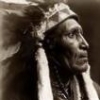
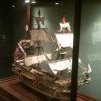

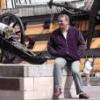

.thumb.jpeg.fc5d633a7b34428fcf19419a73d56d55.jpeg)
